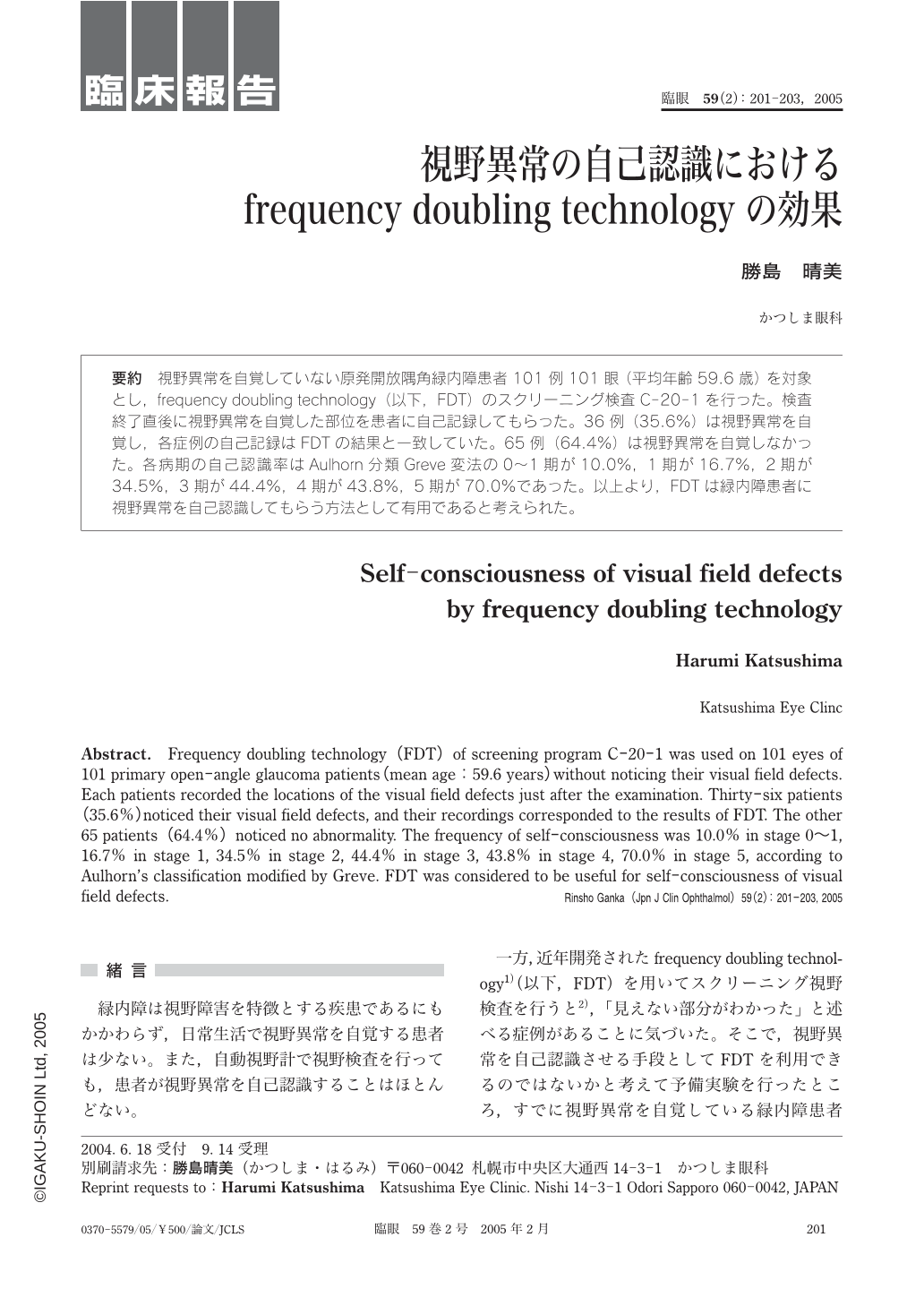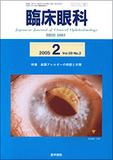Japanese
English
- 有料閲覧
- Abstract 文献概要
- 1ページ目 Look Inside
視野異常を自覚していない原発開放隅角緑内障患者101例101眼(平均年齢59.6歳)を対象とし,frequency doubling technology(以下,FDT)のスクリーニング検査C-20-1を行った。検査終了直後に視野異常を自覚した部位を患者に自己記録してもらった。36例(35.6%)は視野異常を自覚し,各症例の自己記録はFDTの結果と一致していた。65例(64.4%)は視野異常を自覚しなかった。各病期の自己認識率はAulhorn分類Greve変法の0~1期が10.0%,1期が16.7%,2期が34.5%,3期が44.4%,4期が43.8%,5期が70.0%であった。以上より,FDTは緑内障患者に視野異常を自己認識してもらう方法として有用であると考えられた。
Frequency doubling technology(FDT)of screening program C-20-1 was used on 101 eyes of 101 primary open-angle glaucoma patients(mean age:59.6 years)without noticing their visual field defects. Each patients recorded the locations of the visual field defects just after the examination. Thirty-six patients(35.6%)noticed their visual field defects,and their recordings corresponded to the results of FDT. The other 65 patients(64.4%)noticed no abnormality. The frequency of self-consciousness was 10.0% in stage 0~1,16.7% in stage 1,34.5% in stage 2,44.4% in stage 3,43.8% in stage 4,70.0% in stage 5,according to Aulhorn's classification modified by Greve. FDT was considered to be useful for self-consciousness of visual field defects.

Copyright © 2005, Igaku-Shoin Ltd. All rights reserved.


